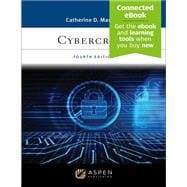Buy a new version of this textbook and receive access to the Connected eBook on Casebook Connect, including lifetime access to the online ebook with highlight, annotation, and search capabilities. Access also includes an outline tool, newsfeed, and other helpful resources. Connected eBooks provide what you need most to be successful in your classes.
Cybercrime, Fourth Edition offers a comprehensive exploration of cybercrime in our society and the criminal justice system’s response. Investigating the dark side of our digital lives, this revision features contemporary examples of cybercrime activity for student examination and debate, active learning exercises for faculty use, and a strong focus on offending and victimization behaviors. Every chapter discusses key concepts, statistics, and legislative histories, ensuring readers are well-informed and prepared.
This book is not just a theoretical guide but a practical tool at the forefront of education. It will enlighten a broad audience, from those unfamiliar with the topic to individuals who need more specific information on a particular type of cybercrime. A valuable guide, this text equips students and academics with the knowledge to navigate the complex world of cybercrime.
New to the Fourth Edition:
- Discussions of deepfake usage and its impact
- New coverage of AI technology used to commit or detect crime
- Updates on new forms of nonconsensual pornography
- Updated statistics that reflect the latest data
- New case studies to encompass recent developments in the areas of:
- revenge pornography
- cyberbullying
- ransomware, hacking, and governmental relations
- terrorists’ use of social media
- Case studies in each chapter that connect new concepts to current events and illustrate the use of criminal theory in crime-solving, keeping readers engaged and connected to the real-world implications of cybercrime
- Questions for discussion that encourage evaluative and analytical thinking
- Discussion and analysis of the demographics and characteristics of the offenders and their victims
- An informative review of the efforts of legislation, public policy, and law enforcement to prevent and prosecute cybercrime
- Coverage of the most widespread and damaging types of cybercrime:
- intellectual property theft
- online sexual victimization o identity theft
- cyberfraud and financial crimes
- harassment









